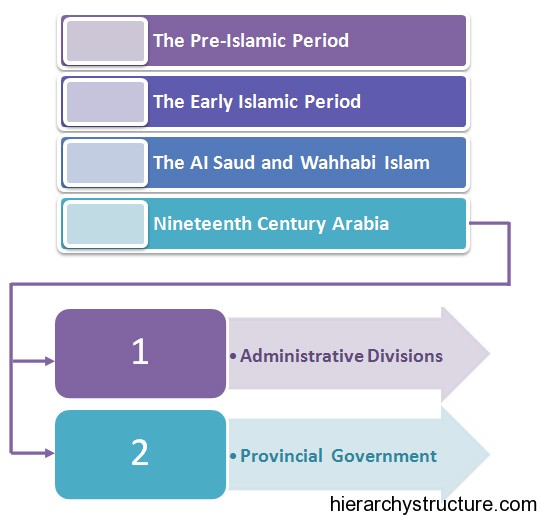Saudi Arabia is the largest country on the Arabian Peninsula. The country shares the Persian Gulf and the Red sea coasts with Jordan, Iraq and Yemen. The historical background of Saudi Arabia is comprised of several distinct periods which include Pre-Islamic period, the early Islam, The AI Saud and Wahhabi Islam and the nineteenth century Arabia, all mentioned in the ascending order of their reign. In this particular article, we will first take a look at the significance of the aforementioned periods in the Arabian history and will discuss in details about the Saudi Arabia royal hierarchy.

The Pre-Islamic period
The southern Arabia evolved significantly as a result of the steady contact with the outside world. The exports of frankincense and myrrh brought wealth to the area. By 1000 B.C, the civilization in this area developed effectively to a higher level.
The Early Islamic period
The time before Islam is known as the time of ignorance and after the birth of Prophet Muhammad in 570 A.D, the Islamic period started. Muhammad was born in Mecca and belonged to the Quraysh tribe, which had become the leading tribe in the city. The ministry of Muhammad played a significant role in unifying Arabia.
The AI Saud and Wahhabi Islam
The emergence of the AI Saud family became an important factor in the Saudi Arabia’s history and started a new period altogether. The whole period before the nineteenth century was driven by the combined effect of The AI Saud and Wahhabi Islam and their successors.
Nineteenth century Arabia
The modern history of Saudi Arabia royal hierarchy can be divided into three distinct periods. The first period was the alliance between Muhammad AI Saud and Muhammad AI Wahhab. The second period continued from the end of the first period to the rise of second AI Saud. And, the third period consists of the establishment of the kingdom of Saudi Arabia.
The Saudi Arabia royal hierarchy had a profound effect on the government and the Saudi Arabia political system of the country. Most of the members of the Council of Ministers come from the Saudi Royal Family.
Administrative Divisions: In the year 1993, the Arabian kingdom was divided into thirteen provinces namely Al Hudud ash Shamaliyah, Al Bahah, Al Jawf, Al Qasim, , Al Madinah, Ar Riyad, Ash Sharquiyah, Jizan, Asir, Tabuk, Makkah, Hail, and Najran. All these aforementioned 13 provinces, then got subdivided into 103 governorates in the year 1994 for a systematic governance.
Provincial Government: The country was divided into 13 provinces, as directed by the king and each province was placed under the jurisdiction of a governor. This action resulted in the systematic governance & establishment of proper law & order. Generally, a prince or a close relative of the Saudi Royal Family. was assigned a particular province. The main job role of the head of the provinces was to analyze the province’s development and meeting with the Council of Ministers to discuss about the needs and requirements of the specific provinces.
